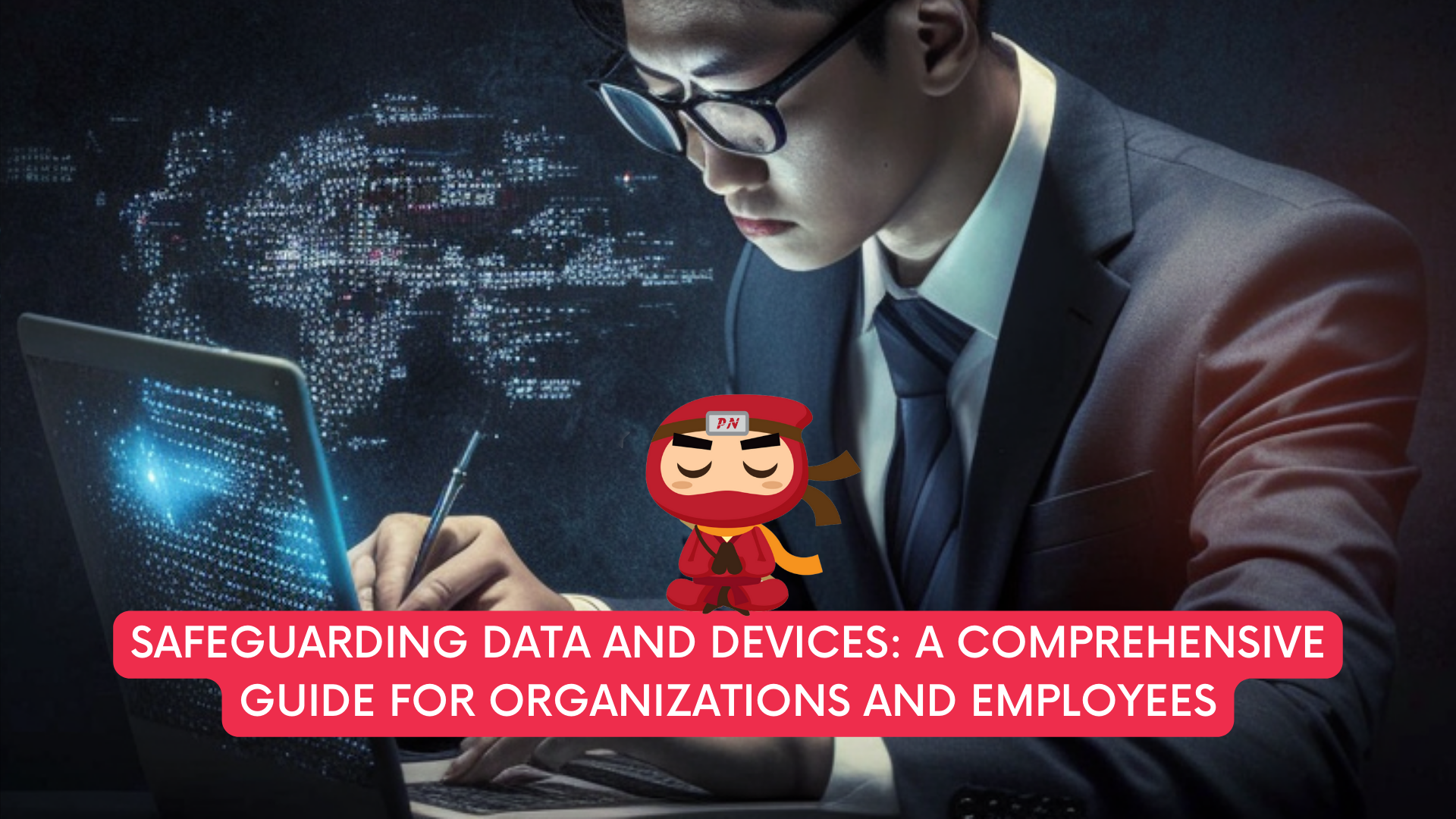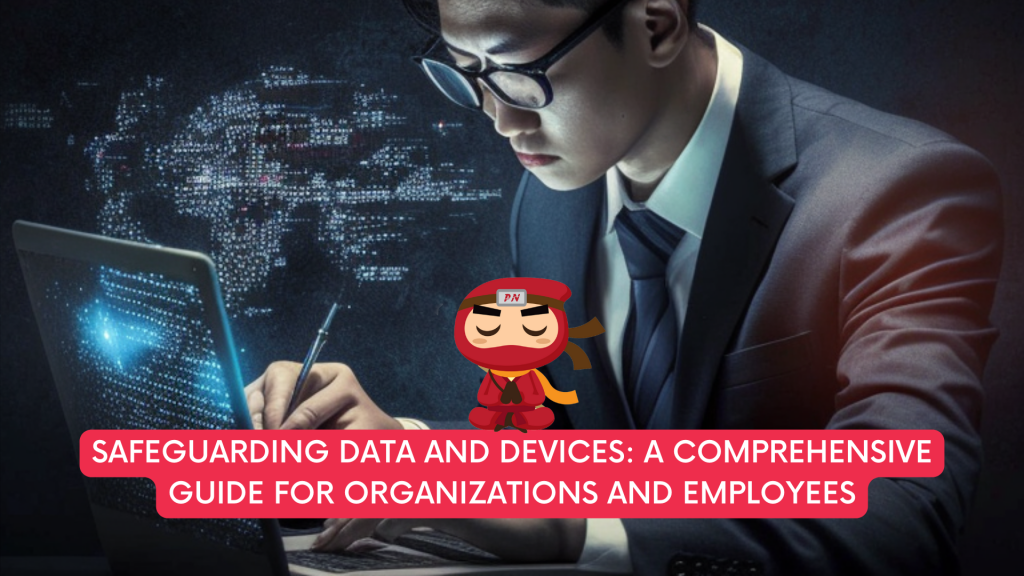KEEP IN TOUCH
Subscribe to our mailing list to get free tips on Data Protection and Cybersecurity updates weekly!







Organizations and their employees must adopt proactive measures to ensure the protection of information assets. Proper implementation of data and device security serves as the cornerstone for fortifying defences against evolving cyber threats. Let’s delve into key strategies and practices that organisations and employees can adopt to uphold the highest level of data and device security.
Data Encryption: The journey begins with data encryption, a robust method ensuring that sensitive information remains impervious to unauthorised access. By encrypting data, organisations lay the foundation for a secure data environment.
Data Access Controls: Stringent access controls play a pivotal role in preventing unauthorised access. By implementing access restrictions, organisations can safeguard sensitive information and minimise the risk of data breaches.
Data Retention and Backup: The proactive establishment of data retention policies and regular backup procedures is paramount. In the face of unforeseen incidents, having reliable backup copies ensures swift recovery and mitigates potential damage to valuable information.

Based on Sensitivity: Data classification is the strategic categorization of information based on its sensitivity and value. A well-defined strategy enables organisations to better safeguard sensitive information and maintain compliance with regulatory requirements.
Optimising Processes: Beyond compliance, effective data classification optimises workflows. It streamlines data handling processes, enhances efficiency, and reduces the risk of mishandling sensitive information.
Encryption and Access Controls: Secure file sharing demands a multi-faceted approach, involving encryption and access controls. This ensures files are shielded during transit and when at rest, preventing unauthorised access and preserving data privacy.
Preventing Unauthorised Access: Establishing secure file-sharing practices is pivotal to prevent unauthorised access to sensitive information. Robust security measures guarantee that only authorised individuals can view or modify shared files.
Protecting Physical Assets: Physical security measures extend beyond digital realms to safeguard devices and assets from unauthorised access, theft, or damage. Implementation of these measures ensures the protection of physical components containing sensitive information.
Preventing Security Breaches: Enforcing stringent physical security protocols significantly reduces the risk of security breaches. This measure is crucial in preventing potential breaches arising from physical theft or unauthorised access to devices.

In conclusion, the proper implementation of data and device security is an ongoing commitment that demands continuous efforts and vigilance from both organisations and their employees. As cyber threats evolve, so must the strategies and practices in place to protect information assets.
By proactively handling data, strategically classifying information, ensuring secure file sharing, and prioritising physical security, organisations can establish a comprehensive defence against potential breaches.
This commitment to security not only protects sensitive data but also instils confidence in stakeholders and reinforces the resilience of organisations in the face of an ever-changing cybersecurity landscape. Stay vigilant, adapt to new challenges, and prioritise security to ensure the longevity of your data and device protection efforts.
Your appointed DPO can work with you on your PDPA compliance, ensuring that there will be policies in place to make sure that the handling of personal data is PDPA compliant.
A Data Protection Officer (DPO) oversees data protection responsibilities and ensures that organisations comply with the Personal Data Protection Act (PDPA). Furthermore, every Organization’s DPO should be able to curb any instances of PDPA noncompliance as it is the officer responsible for maintaining the positive posture of an organisation’s cybersecurity.
DPOs complement organisations’ efforts to ensure that the organisation’s methods of collecting personal data comply with the PDPA. It also ensures that policies are set in place to make sure that there will be no instances of data breaches in the future.
Don’t wait any longer to ensure your organisation is PDPA compliant. Take our free 3-minute PDPA Compliance Self-audit checklist now, the same “secret weapon” used by our clients to keep them on track. Upon completion, we will send you the results so you can take the necessary action to protect your customers’ data. Complete the free assessment checklist today and take the first step towards protecting your customers’ personal data.